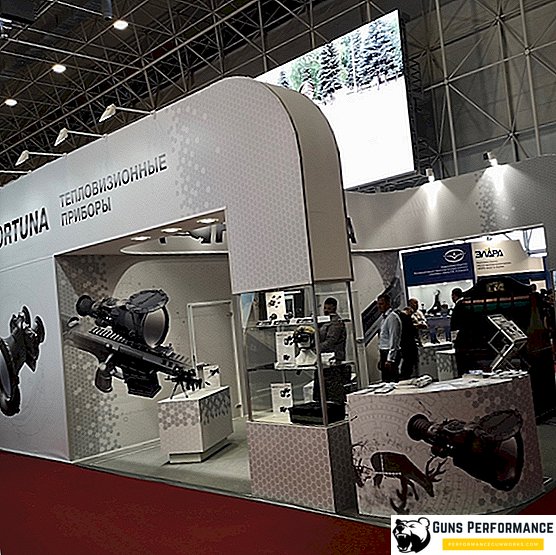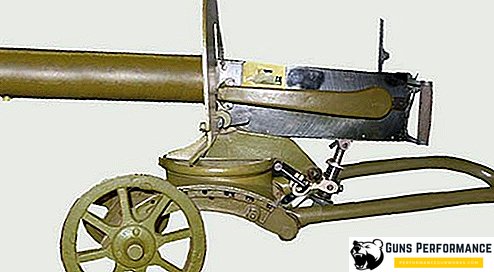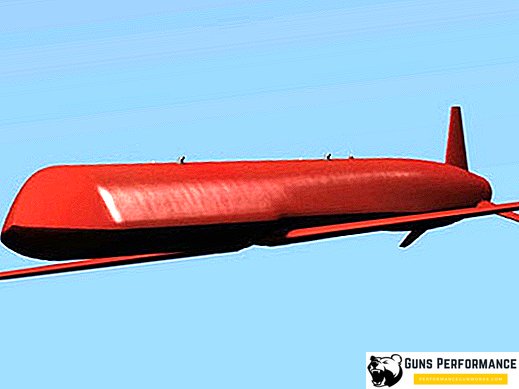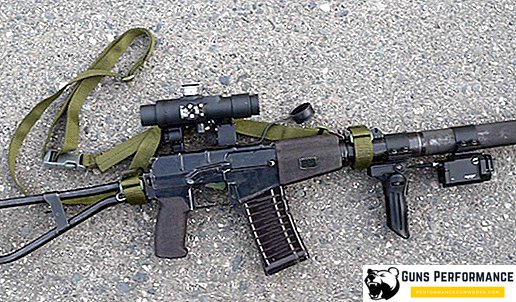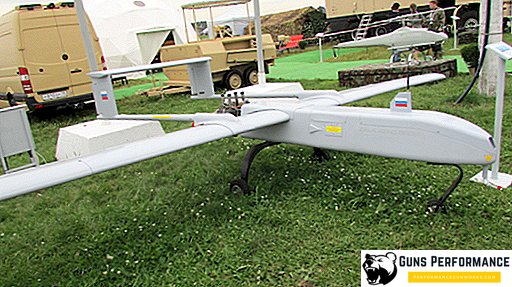
The pre-war period in the history of Soviet aviation is full of bright and heroic pages. It was a time of records, heroes, pilots and the construction of new unprecedented aircraft. The real symbol of that era is the ANT-25 aircraft, on which several world records of flight range and duration were beaten. The second designation of this car was "RD", which meant "distance record."
The names of such famous pilots as Chkalov, Levanevsky and Baidukov are connected with the ANT-25 aircraft. And, of course, the aircraft designers of Sukhoi and Tupolev, who led the development of the aircraft. While working on a new unique machine, designers had to solve many complex technical problems, because no one had built such aircraft before.
ANT-25 was designed at the suggestion of Klim Voroshilov specifically for long-haul flights. Young Country of Soviets wanted to show the world their achievements in the field of aviation. ANT-25 was a "piece" aircraft, built specifically for the conquest of aviation records. It was there that the famous flight over the North Pole to the USA was made. The Soviet pilots were received by the American President Roosevelt himself at the White House.
In total, two ANT-25 aircraft were built, the car went up on its first flight in June 1933. In 1989, a full-size copy of the aircraft was made; today it is located in the Air Force Museum in Monino.

The history of the creation of the ANT-25
At the end of December 1931, the head of the Soviet military department, Klim Voroshilov, proposed the creation of a special aircraft for setting new flight range records. This proposal was approved, and its implementation was entrusted to the already successful at that time designer Andrei Nikolaevich Tupolev. Before the developers of the aircraft was tasked to achieve a range of 13 thousand km.
Direct development of the machine involved the department of pilot aircraft TsARI, design work involved the design team Sukhoi. Tupolev performed general project management.
The "highlight" of the aircraft, allowing it to carry out ultra-long flights, was a large lengthening of the wing. The ratio of its span to the chord was 13. Before the creation of the ANT-25 aircraft with such long wing consoles did not exist. Before the designers got a number of complex issues from the field of aerodynamics.
The wing of the new aircraft was supposed to be not only long, but also strong enough - the designers planned to place fuel in it, the weight of which was 52% of the take-off. Placing the fuel in the wings not only made the fuselage lighter, but also unloaded the wing: the pressure from the aerodynamic forces, which in flight affects the wing from bottom to top, was compensated by the weight of the fuel tanks.
Another important problem that confronted the creators of the ANT-25 was the special vibration of the structure or flutter. At that time, this phenomenon was poorly studied, so a special group appeared to study it at TsARI. It was during the work on the creation of the ANT-25 aircraft that Soviet scientists managed to create a general theory of this phenomenon and on the basis of its solution this problem.
The construction of the first aircraft started in June 1932, and a year later the first flight took place under the control of Gromov. He praised the ease of control of the machine and its stability in flight. In August 1932, construction began on the second copy of the ANT-25 (or a backup aircraft, as it is often called). The first flight of the ANT-25 No. 2 took place in early September 1933. The same test pilot Gromov flew the plane. Tests of both aircraft were almost parallel.

The tests have shown that neither the first nor the second machine does not meet the necessary requirements. The range of the flight number 1 was 7800 km, and the backup aircraft was able to overcome 10,800 km.
The designers came to the conclusion that the main problem for achieving the design characteristics is the corrugated skin of the aircraft, which created additional aerodynamic drag, which increased fuel consumption.
It was decided to cover the wing with varnished canvas. In 1934, began testing a converted backup aircraft. They were crowned with success: the improved ANT-25 was able to reach a range of 13020 km.
In general, we can say that the ANT-25 aircraft, on which record flights were made, were very different from the factory cars. In addition to replacing the wing trim, new carburetors were installed on the aircraft, the protruding elements of the hull were polished, and the aircraft engine was equipped with a gearbox.
In August 1933, the ANT-36 long-range bomber, better known as the DB-1, was designed based on the ANT-25 aircraft. He was accepted by the military and immediately launched into a series. It was planned to create 50 bomber. A bomb bay was placed in the center-plane, where ten 100-kilogram bombs were placed, and machine guns were installed in the cockpit of the co-pilot and navigator.
The first DB-1 was tested in the fall of 1935, but because of the unsatisfactory quality, the military did not accept it. A total of 18 bomber aircraft were produced, 10 of which were handed over for operation. However, the car turned out to be unsuccessful, in 1937, all aircraft transferred to the Air Force were mothballed.
Design description ANT-25

The ANT-25 aircraft is made according to the normal aerodynamic design; it is an all-metal low-wing aircraft equipped with one M-34 engine.
The main design feature of the aircraft is a wing with record for its time values of narrowing and elongation. This allowed the ANT-25 to make unique range flights.
The ANT-25 wing had a three-spar construction. Between the two spars were fuel tanks, and the third spar was optional. Ailerons with a four-section construction were suspended to it.
The plane had a tricycle landing gear, its main racks (with two wheels on each) were semi-retractable. In the retracted state, they half went into the back of the wing and were covered with fairings. The tail wheel was also closed by a fairing.
The fuselage of the aircraft consisted of two parts - the front, forming a single unit with the center section, and the tail - type semi-monocoque. To the front of the ANT-26, the M-34 engine was attached, separated from the cockpit by a special partition.
The cockpit housed the workplaces of the first and second pilots, as well as the navigator. In addition, the cabin was equipped with berths for crew members, as well as flight and navigation equipment, which was the most modern for its time. ANT-25 was equipped with an onboard radio station that allows you to transmit messages for 5 thousand km.
The ANT-25 aircraft was supposed to be equipped with an M-34R engine with a gearbox, but because of its absence, the first aircraft installed an M-34 with a wooden propeller.
The stock of fuel in the tanks of the aircraft exceeded 6 tons.

History of use of ANT-25
By the autumn of 1934, the aircraft were refined and fully ready for use. A concrete strip was built specifically for the ANT-25 at Schelkovo airdrome, allowing the vehicles to take off with full fuel tanks. On September 10, 1934, the crew commanded by Gromov lifted the car into the air and began flying along the closed circular route Moscow - Ryazan - Tula. The car spent 75 hours in the air and only because of the deterioration of the weather was forced to land at Kharkov.
It was a world record. The aircraft covered 12,411 km. However, at that time the USSR was not yet a member of the FAI, therefore it was not registered.
On August 3, 1935, an attempt was made to fly non-stop across the North Pole to San Francisco. The crew of the ANT-25 was commanded by pilot Levanevsky. The record flight was announced in the media, they even managed to make a memorable postage stamp for this event. However, the flight did not take place. Almost immediately after takeoff, oil began to flow into the cockpit. Levanevsky decided to interrupt the flight. Later it turned out that the oil was leaking because it was poured into the tank too much.
In July 1936, ANT-25 under the command of Chkalov flew to the Far East. Immediately after departure from the airport, the plane headed north, the route lay over the Arctic Ocean, Yakutia and the Sea of Okhotsk. ANT-25 could not reach Khabarovsk - its final point - he made an emergency landing on the sand spit of the island Udd.
During this flight, the aircraft traveled 8,750 km, more than 5 thousand of which were flying over the sea. For nearly six hours the pilots drove the aircraft, being in conditions of almost zero visibility, not observing either the earth or the sky.
Both people and technology adequately passed this difficult exam.
In the autumn of 1936, preparations began for the flight, which would set a new distance record. Several possible routes were discussed, as a result the most difficult of them was chosen - through the pole to America.

On June 18, 1937, the ANT-25, commanded by Chkalov, broke away from the runway of the Schelkovo airfield and went on a flight that would later become world famous. June 19, the plane reached the northern coast of Canada, and the next day landed in the western part of the United States. The length of the flight was about 9 thousand km.
The flight was very hard, the crew had to overcome serious difficulties: cold, lack of oxygen, icing of the aircraft. Previously, no one flew this route. This flight was a real triumph and sensation. The press and the enthusiastic audience literally did not give rest to the Soviet pilots. They were received by President Roosevelt. He said that courageous pilots did more for the rapprochement of the two nations than diplomats in twenty years. At the same time, voices began to be heard that the aircraft crew was just lucky, and their success was an accident.
However, on July 14, 1937 the second ANT-25, commanded by Gromov, landed in California, completely repeating Chkalov’s route. This flight dispelled all doubts. During the flight, two more world records were broken.
In 1937, the aircraft was disassembled by ships was delivered to Leningrad.

Characteristics TTH ANT-25
| Modification | ANT-25 |
| Weight, kg | |
| empty aircraft | 3784 |
| maximum takeoff | 10000 |
| engine's type | 1 PD M-34R |
| Power, hp | 1 x 900 |
| Max. speed, km / h | 244 |
| Practical range, km | 10800 |
| Practical ceiling, m | 7850 |
| Crew | 3 |



